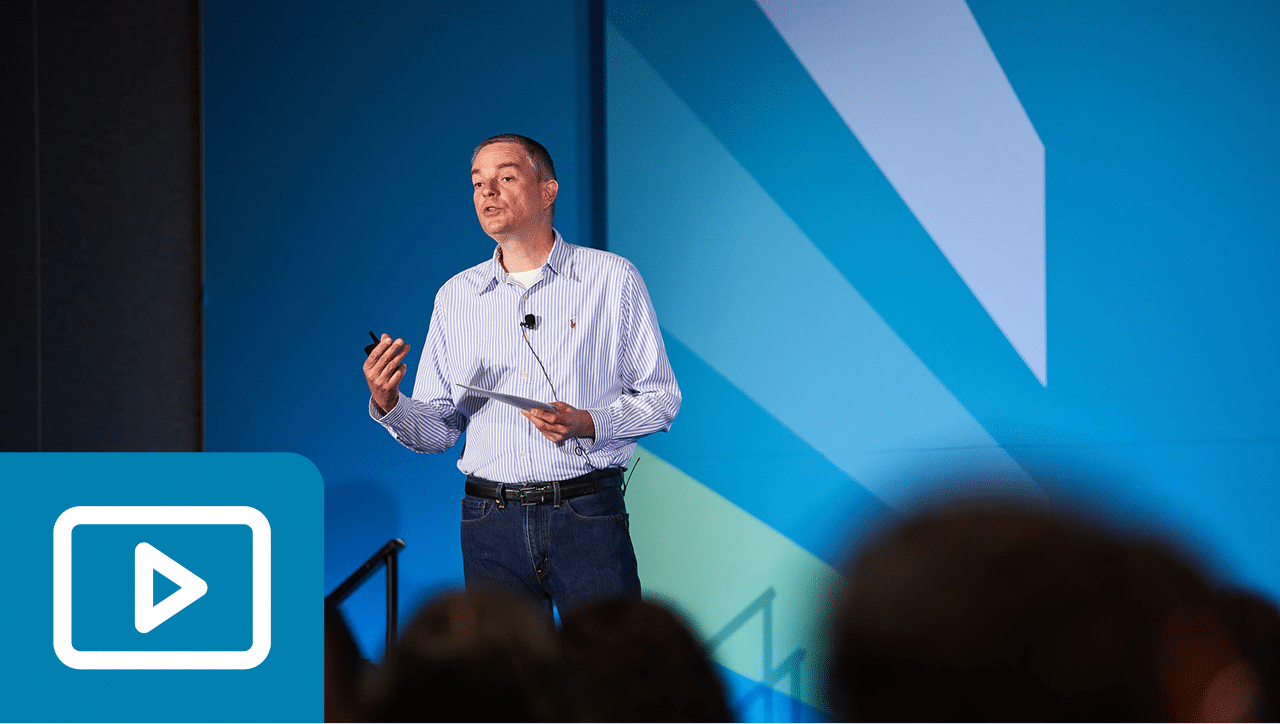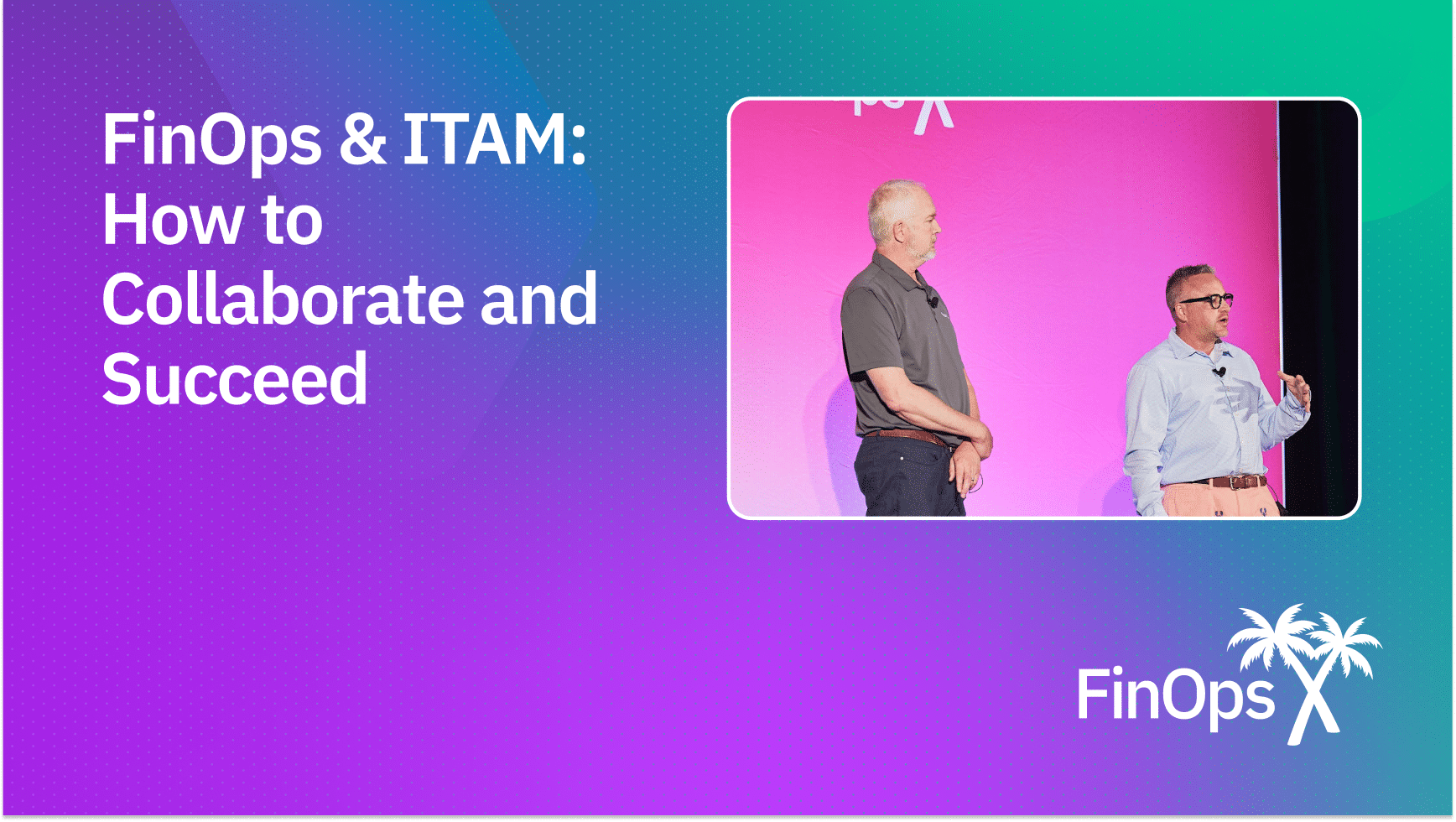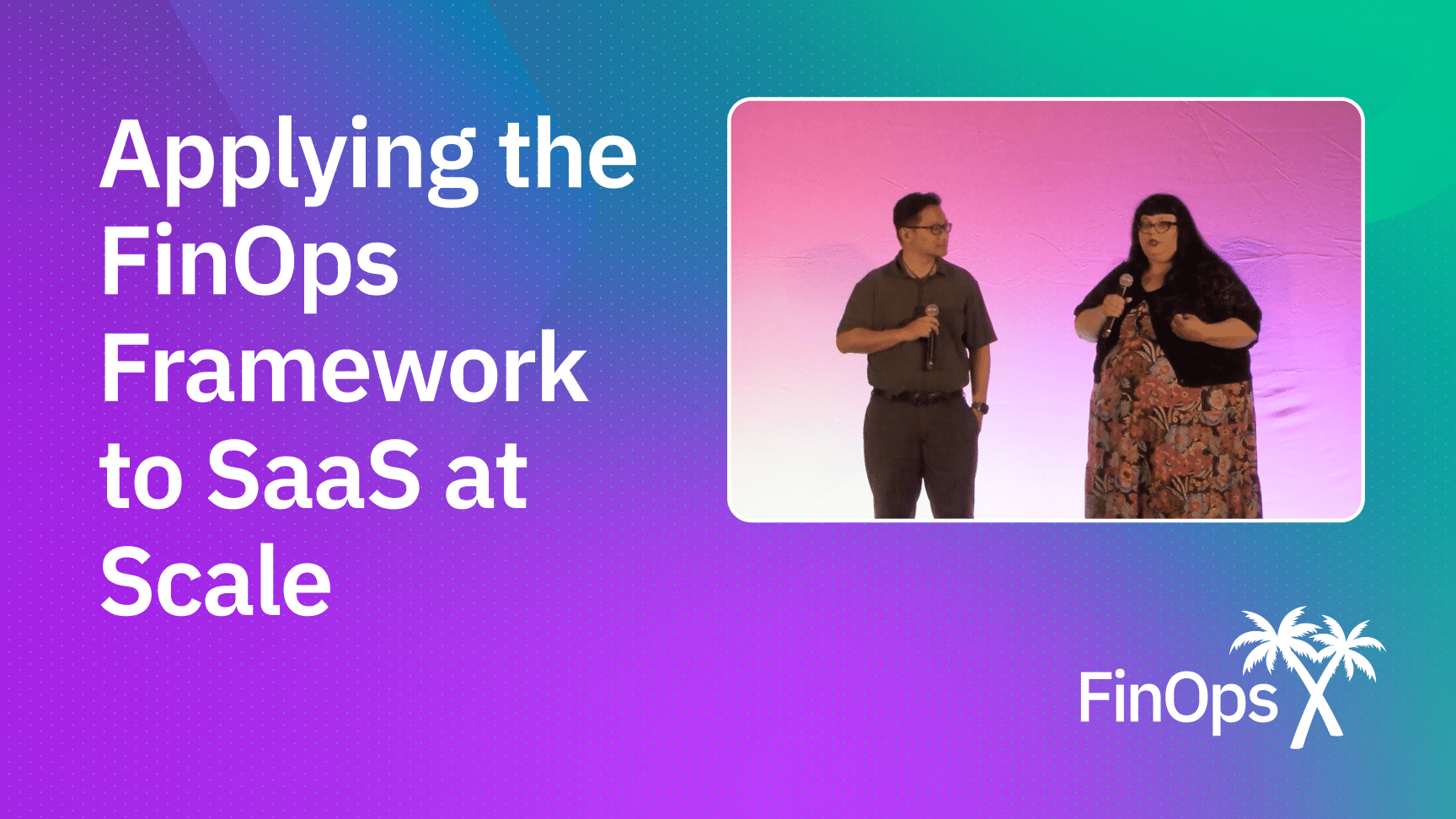Key Insight: The convergence of FinOps and IT Asset Management (ITAM) reflects the reality of today’s integrated technology landscape, where organizations manage a mix of fixed and variable infrastructure costs across Cloud, SaaS, Licensing, Data Center, and AI under a single unified practice. FinOps drives value creation through financial accountability, informed decision-making, and continuous innovation of technology investments, while ITAM brings governance, compliance and contractual accountability. Together, they enable a holistic approach to technology spend and its value, clarify addressable cost, and reduce risk, waste, and audit exposure. Collaborative practices are already delivering measurable value—strengthening vendor negotiations, improving spend accountability, and enhancing operational efficiency across FinOps Scopes.
The Evolving Technology Landscape: Why FinOps and ITAM Collaboration Is Essential
The convergence of FinOps and IT Asset Management (ITAM) is accelerating as organizations navigate an increasingly complex and evolving technology landscape, along with diverse pricing models across Cloud, On-Premises, SaaS, Licensing, and AI.
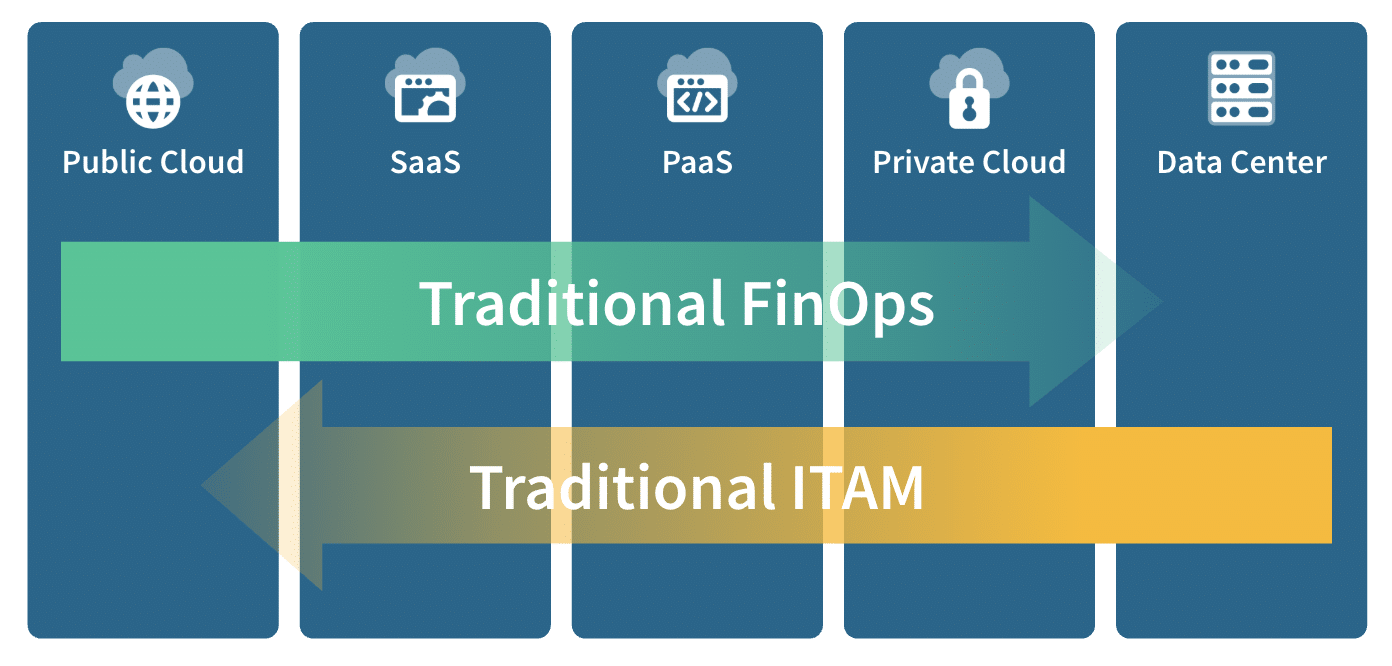
FinOps elevates financial accountability across the organization and up to the executive level, providing strategic support for technology investment decisions and ensuring they are connected to measurable business value. ITAM reinforces this through disciplined governance, compliance, and asset accountability.
Together, they bring clarity to the mix of fixed costs—such as term licenses, support, and committed capacity—and variable costs tied to dynamic usage metrics like compute hours, storage, data transfer, energy costs, SaaS seats, or AI tokens.
Collaborating, they better define the total cost and can more easily identify the addressable cost: the portion of spend that can be influenced in-period through rate, usage, placement, or contractual terms.
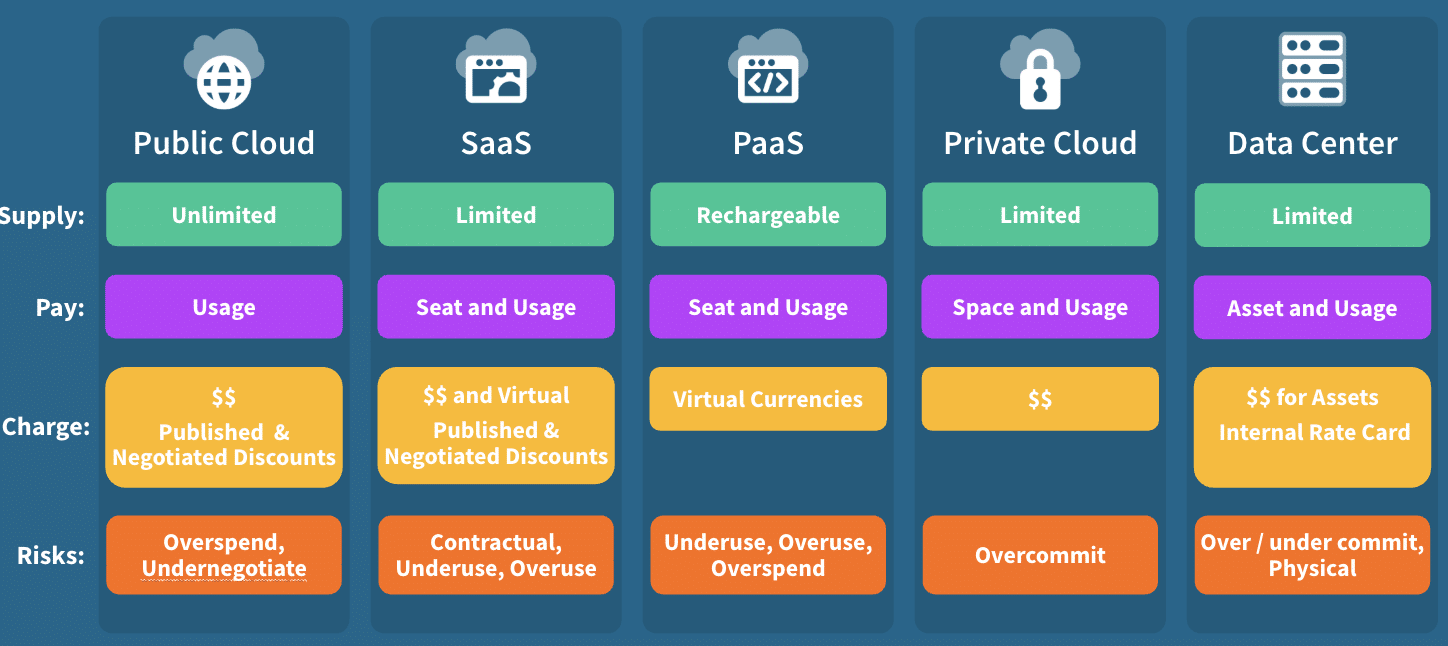
Through this convergence we are seeing three clear areas where FinOps and ITAM work better together when unified to maximize business value:
- Cost: Achieve a holistic view of technology spend, decision support for multi-year technology investments, creating improved consumer spend accountability, strengthening vendor negotiations, improving margins, driving better technology value, etc..
- Risk: Mitigate un-budgeted fines and audit exposure, especially for licensed assets purchased via Cloud Marketplaces.
- Efficiency: Eliminate duplication, redundancy, and SaaS sprawl, improving operational effectiveness.
Real-world practitioner experiences are already demonstrating that collaborative approaches between FinOps and ITAM are delivering measurable value across multiple scenarios.
Cost Scenario
Holistic View of SaaS Spend and Improved Vendor Negotiation
Overview
Within a large cloud-centric organization, spend on cloud and SaaS easily exceeds $150–200 million annually. Renewal and purchase decisions were mostly decentralized, with engineering managers handling contract renewals based on current usage—leading to missed opportunities for long-term savings, inefficient vendor negotiations, and uneven accountability for spend.
FinOps Value
FinOps practitioners brought data together into curated, centralized spend reports, surfacing the right metrics and context for every FinOps Persona, including usage forecasts covering all major vendors and contracts. By building detailed forecasts, benchmarking discounts, and tracking renewal timing, they empowered business leaders to make data-driven decisions and negotiate better rates. Near real-time monitoring helped identify anomalies and overages, ensuring spend accountability per team enabling better technology value and outcomes from investments.
ITAM Value
ITAM processes provided inventory discovery, contract lifecycle management, and an understanding of vertical-specific software needs. By recording the contract’s ownership, renewal dates, and historic utilization, ITAM ensured that only truly needed products were retained and that over-procurement, shortfalls, or accidental contract lapses were avoided.
Unified Impact
Together, FinOps and ITAM delivered transparency in spend across all teams, increased consumer accountability for usage, and strengthened the organization’s position in vendor negotiations. Engineering leaders were presented with spend visualizations and contract options, leading to deliberate decisions on retention, optimization, or downsizing—ultimately maximizing value from every dollar spent, while reducing risk.
Risk Scenario
Audit Risk and Cloud Marketplace License Exposure
Overview
The organization struggled with unclear understanding of software compliance, leading to audit risk—particularly as SaaS, marketplace, and cloud purchases increased. Teams found that licenses were purchased outside of process, often through decentralized channels like cloud marketplaces or credit cards, creating shadow IT and compliance gaps.
FinOps Value
FinOps provided visibility for all cloud assets, helping identify untracked or pay-as-you-go software running in cloud environments that could trigger unexpected costs. They highlighted the financial risk of unbudgeted audit expenses, which ripple through business plans and impact spending in other areas.
ITAM Value
ITAM implemented inventory and compliance checks, normalized and enriched software data from across environments, and automated license identification to detect and remediate risks before vendor audits. They established centralized processes to capture all asset and license information, including those acquired through cloud marketplaces.
Unified Impact
By working together, FinOps and ITAM eliminated silos, built comprehensive visibility into what was procured and deployed, and were able to discover and remediate out-of-process or unused software—thereby reducing surprise audits and massive fines. With centralized reporting, they avoided situations where, for example, organizations spent tens of millions in audit penalties because they were unaware of unused or improperly managed licenses purchased via decentralized cloud channels.
Efficiency Scenario
Discounting Trap and SaaS Shelfware Prevention
Context
The organization negotiated a major volume discount for 1,000 licenses but only used 500 in year one, resulting in costly shelfware where the effective per-user cost exceeded on-demand rates.
FinOps Value
Enables granular tracking of consumption-based SaaS usage despite limited native vendor visibility; builds custom reports that combine contract limits, billing, and SKU-level trends for actionable insights.
ITAM Value
Provides transparency on actual license utilization versus contractual commitments, highlights shelfware risk, and supports negotiation of more flexible terms.
Unified Impact
By collaborating, ITAM and FinOps produce clear usage reporting, inform better forecasting, and support a step-plan approach—scaling commitments with actual adoption and avoiding wasteful upfront lock-in. This supports renegotiation, improved vendor transparency, and ongoing optimization at each renewal.
How to Approach Moving Toward Unified FinOps and ITAM Practices
With the value of collaboration now evident, many organizations are evolving toward a more integrated FinOps and ITAM model. Gartner predicts that by 2026, most enterprises with mature cloud strategies will unify their Software Asset Management (SAM) and FinOps capabilities into a central function. While full integration is not required, close collaboration is essential to align technology, financial, and contractual decisions for maximum business value. We’re seeing successful organizations taking the following steps:
Organizational Alignment
- Establish shared leadership and a common governance structure to align objectives, streamline decision-making, and reduce silos between FinOps and ITAM.
- Define clear accountability for shared outcomes such as total cost optimization, compliance, and vendor strategy.
Shared Data Architecture
- Integrate data sources across Cloud, SaaS, and Licensing platforms to create a single system of record for cost, usage, and contract data.
- Use centralized tooling and dashboards to surface insights, identify duplication, and ensure real-time accuracy across FinOps Scopes.
Common Review of Investments
- Conduct regular reviews of technology investments and renewal cycles, including reviewers with both ITAM and FinOps skill sets, to balance financial efficiency with contractual compliance.
- Align forecasting and budgeting processes to reflect both consumption-based and entitlement-based spend.
Centralized License and SaaS Management
- Maintain a central repository of licenses with purchase details, renewal dates, and usage terms to eliminate duplication and ensure compliance.
- Track SaaS renewals centrally and audit usage regularly to identify underutilized or redundant applications.
- Apply ITAM lifecycle processes such as Joiners, Movers, Leavers to optimize license allocation and prevent waste.
Continuous Collaboration
- Build structured collaboration between IT, Procurement, Finance, and Legal, ensuring visibility and accountability across the lifecycle of assets and spend.
- Encourage business-led procurement to ensure purchased services align with real needs and deliver measurable outcomes.
Stay Adaptive
- Continuously monitor vendor pricing model changes, including evolving SaaS and AI licensing models, to adapt governance and optimization strategies.
- Use insights from FinOps to inform ITAM compliance practices—and vice versa—to maintain alignment in a dynamic technology environment.
Together, these practices position FinOps and ITAM as a unified strategic capability that enables informed investment decisions, proactive cost control, and improved business outcomes across all Scopes of technology spend.
Get Involved
The FinOps Foundation also holds a monthly FinOps ITAM Community call for practitioners working in this space, you can register using this link: https://community.finops.org/meeting/ai-for-finops-and-automation-2
Learn More
- FinOps Scopes – SaaS
- Introduction to FinOps for SaaS
- Applying the FinOps Framework to SaaS
- FinOps for SaaS Best Practices and Adopting FOCUS
- Introducing FOCUS 1.2 – SaaS/ PaaS Support
- FinOps Foundation and ITAM Forum Strategic Partnership
Topics
-
FinOps Foundation Perspectives

